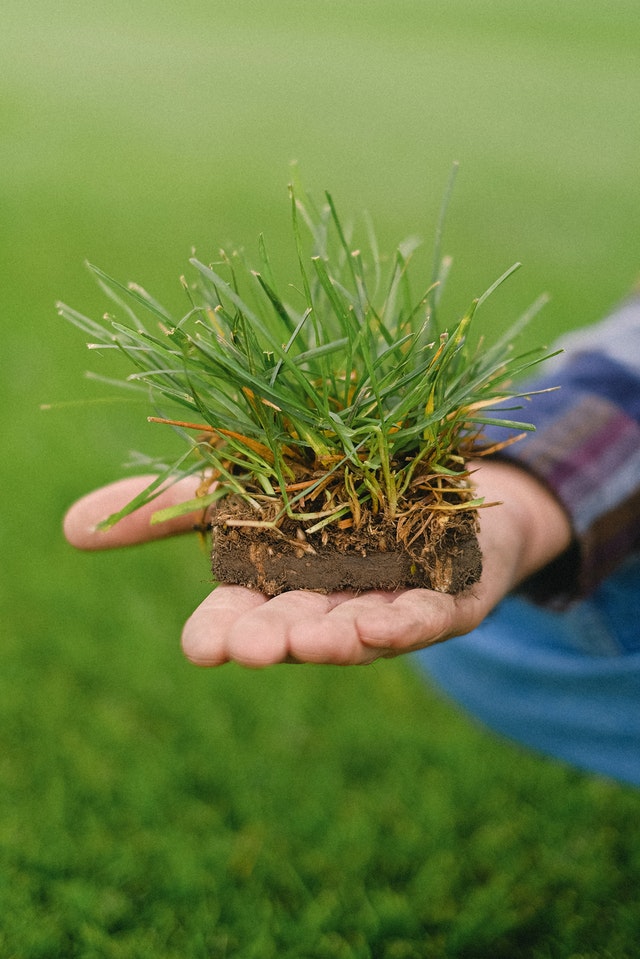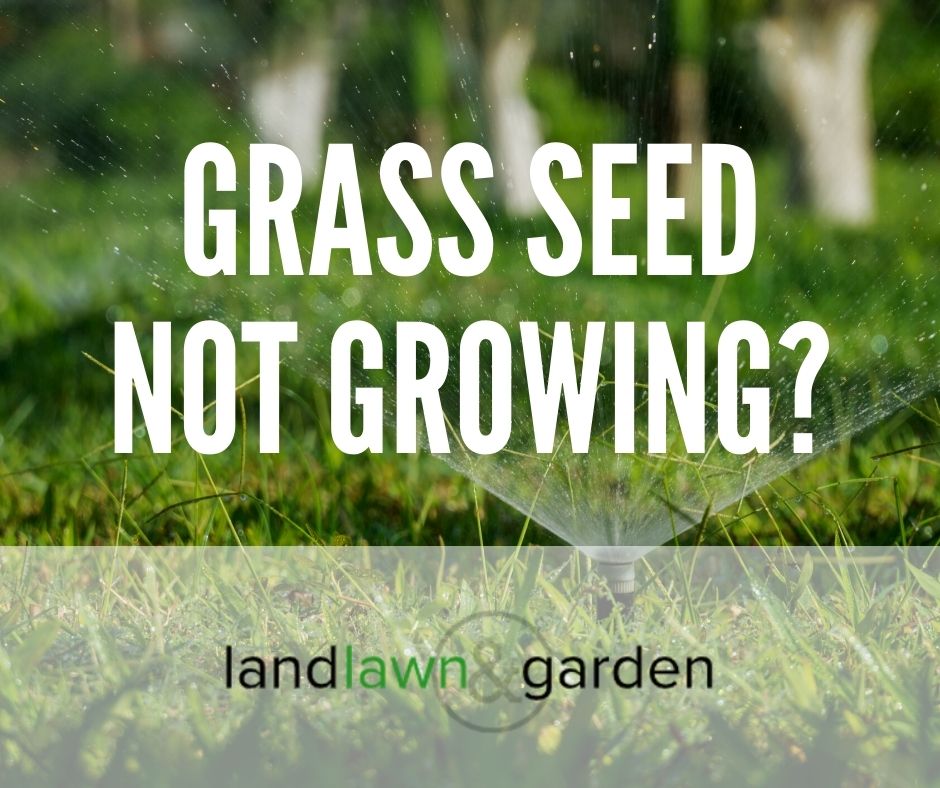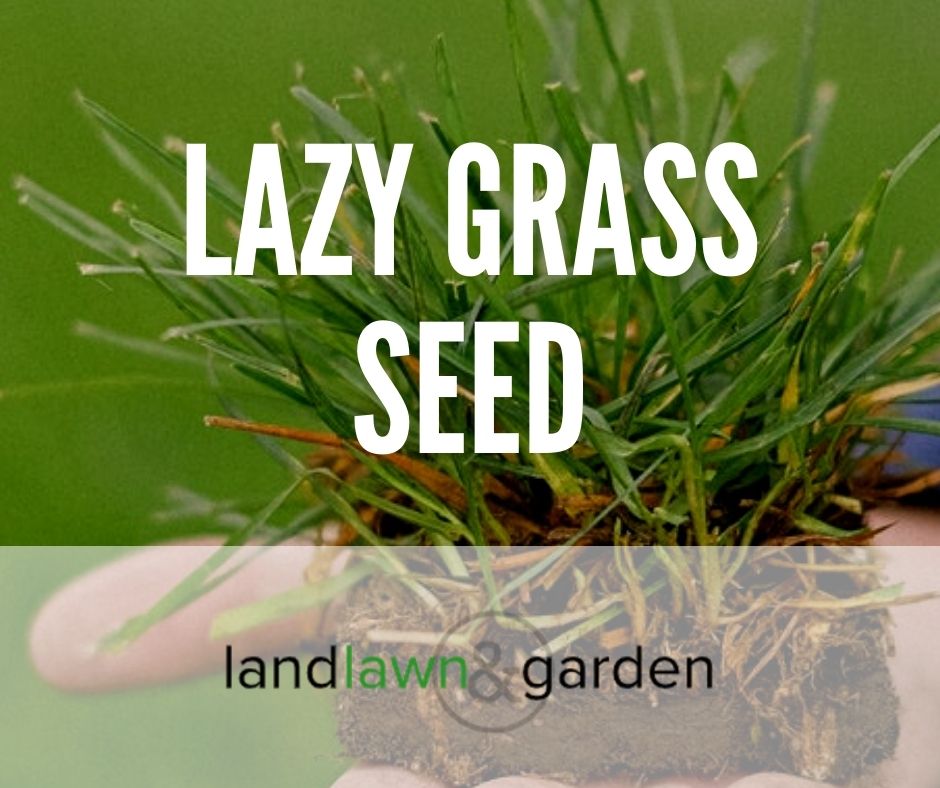Growing grass from seed rather than from sod has many advantages. It is much cheaper, less labor-intensive, and you can grow a wider variety of grasses to suit the conditions in your garden. However, sowing grass seed is not as simple as sprinkling the seeds onto the ground and leaving it to grow.
As long as grass seeds are in contact with bare soil, they will germinate. However, proper soil preparation, covering the seeds with a thin layer of soil, and watering it carefully will help to grow an even, lush lawn from seed. Avoid just throwing the seeds down and leaving them to germinate.
Growing a lawn successfully from seed takes effort and regular maintenance, especially in the initial stage. This article discusses how to seed a lawn correctly, when the best time of year is to sow grass, and how to grow and maintain a lawn that you are truly proud of.
Quick Links
Can I Just Throw Grass Seed Down?
Technically, yes. If you toss grass seeds onto bare soil, the seeds that are in contact with the soil will germinate. However, if the soil is compacted, dry and has weeds growing in it, fewer grass seeds will germinate. To grow a high-quality lawn from seed, one should follow this guide.

How to Establish a Lawn from Seed
It is possible to grow a gorgeous, dense lawn inexpensively from seed. All it takes is a little effort and time!
Get the following garden tools together:
- Garden fork
- Metal rake
- Lawn roller or a spade
- Lawnmower
- Plastic container
- Fine, dry sand
- Compost
- Hose and sprinkler
Follow these steps to achieve success:
- Choose the right grass seeds. Consider the growing conditions of your garden – the soil type, amount of sunlight or shade, and the climate. Fescue grass is a cold-weather species. It is drought tolerant once established and is evergreen. Buffalo grass is also very drought tolerant, and it thrives in heat and sun. However, it does not tolerate traffic well. St Augustine grass can grow in dappled shade. Bahiagrass is thicker and lower maintenance – good for large areas of lawn. There are so many options!
- Soil preparation. Use a garden fork to lightly turn the soil over. Remove any weeds. Add rich, well-rotted compost. Rake the surface of the soil with a metal rake so that it is even and finely tilled.
- Sow the seeds. Place the seeds into a container and mix them evenly with fine, dry sand. This allows you to see where you have sown, allowing you to get a more even coverage. Sprinkle the seeds evenly and not too densely. Use about 3 grams of seed per square meter.
- Lightly cover the seeds. Rake the seeds in extremely gently so that they are covered by no more than 3mm of soil. Using a garden roller or the back of a spade, tamp down the soil to create good contact between the seeds and the ground.
- Water carefully. The soil needs to be watered evenly and lightly, so that big water droplets do not erode the soil and no puddles form (the seeds will be displaced and float to the surface). Use a sprinkler to mist the soil, keeping it moist. Water it regularly until the grass has been established properly.
- Start mowing the lawn. When the grass blades are about 6 cm tall, it is time to mow your new lawn for the first time. Set the mower to a height of 4 cm.
- Weekly lawn mowing. Mow the lawn every week at the correct height. For sunny areas, 3 cm is recommended, and 5 cm for shady areas.
Remember not to walk on a newly seeded lawn! You will crush the tiny grass plants just as they germinate, killing them. For more on this, read our article on why you can’t walk on grass seed.
Lawn Maintenance
To keep your lawn looking its best all year round, you will need to stick to a regular maintenance routine. There is more to maintaining a beautiful lawn than meets the eye.

Keep it Weed Free
Weeds make a lawn look untidy, and they compete with the grass for water and nutrients, weakening it. The best way to get rid of weeds is to remove them manually. If your lawn is too large to hand weed, use strong vinegar to spray weeds. Avoid using chemical herbicides, as they are harmful to the environment.
Overseeding Your Lawn
For the long-term maintenance of a thick, healthy lawn, you should overseed it every three to four years. This means spreading grass seed over an existing lawn to correct or prevent thinning. Overseeding shoulder either be done in the fall or in late summer as the seeds need warm, moist soil to germinate.
Prepare the lawn for overseeding by mowing it very short. Bag all the clippings and use a metal rake for scratching up the soil surface, especially in areas where the soil has become compacted. Next, sprinkle grass seeds over the entire lawn and rake gently. You can roll the lawn to increase the seeds’ contact with the soil. Diligently water the overseeded lawn.
Mowing Your Lawn
Weekly lawnmowing during summer is essential for maintaining a lush lawn. It is critical to cut the grass to the correct height. Cutting it too short can cause damage. Ensure that the blades of the mower are sharp and clean to prevent fungal diseases.
Feed Your Lawn
It is best to use organic fertilizer on your lawn as it is much better for the environment than chemical fertilizer. It will benefit the grass as well as the soil microbes by slowly releasing nutrients.
Apply organic fertilizer twice annually, in spring and the fall. One should also apply a top dressing of compost to your lawn. Adding organic matter will help with water retention. This is especially important in sandy and clay soils.
Wrapping Up
Grass seeds will germinate and grow if you just throw them onto the ground, but this is not the most effective way to start a lawn from seed. To grow a lush, dense carpet of grass, one should prepare the soil beforehand, use a garden roller to ensure contact between the seeds and the soil, and the soil must be carefully watered.
Maintaining a beautiful lawn required dedicated effort. In summer, the grass should be mowed once a week. You need to manually weed the lawn. In spring and fall, one should apply a top dressing of compost and feed the grass with organic fertilizer. Every three to four years, one should overseed the lawn to prevent thinning.

What if your grass seed doesn’t grow?!
Click the button below to read our deep-dive article on some of the most common reasons your grass seed will fail to grow and what you can do about it. This is a MUST READ for first time grass seed users.

Kevin is the owner of Land Lawn & Garden. In addition to taking a lot of pride in his lawn at home, he also helps manage the family land. You can find more about him here.

